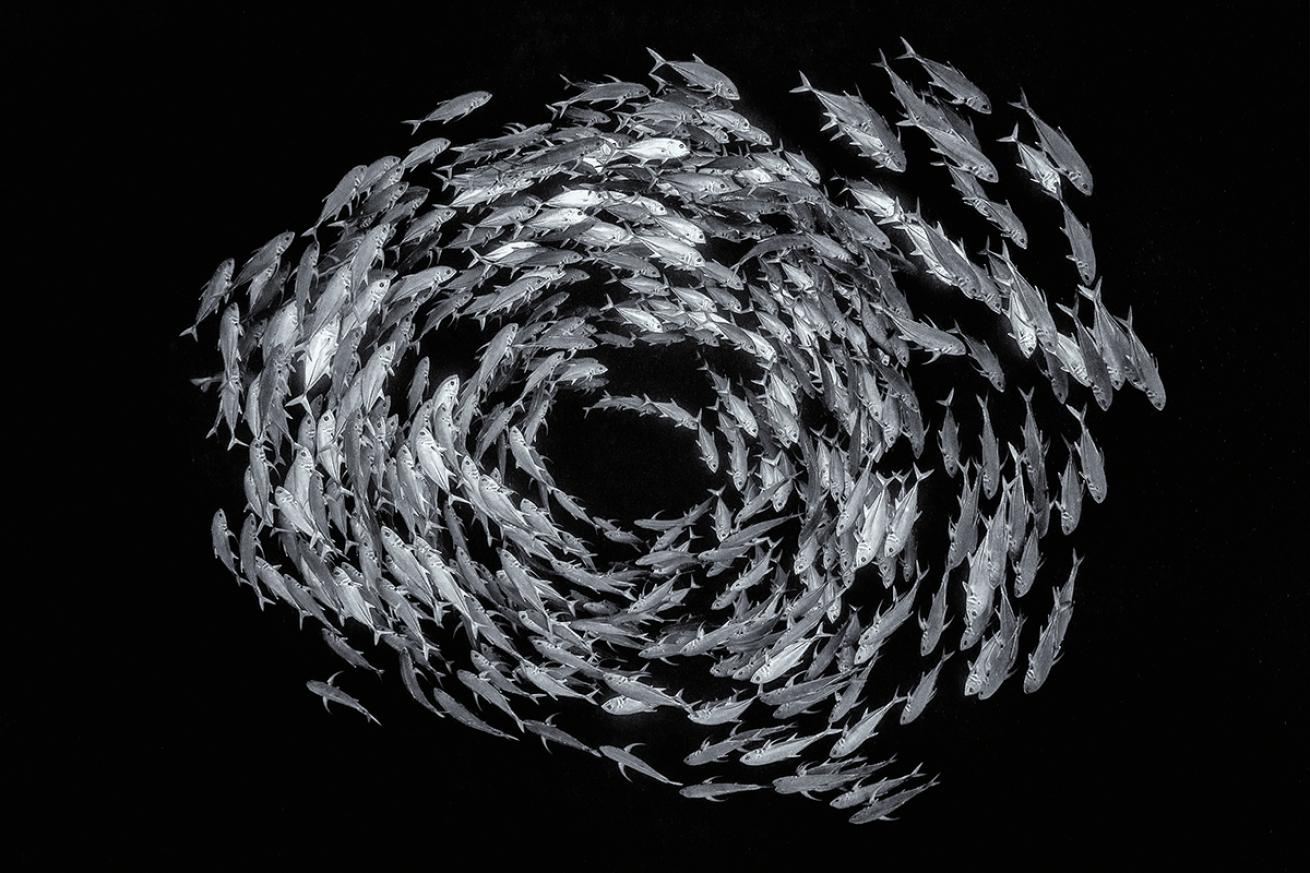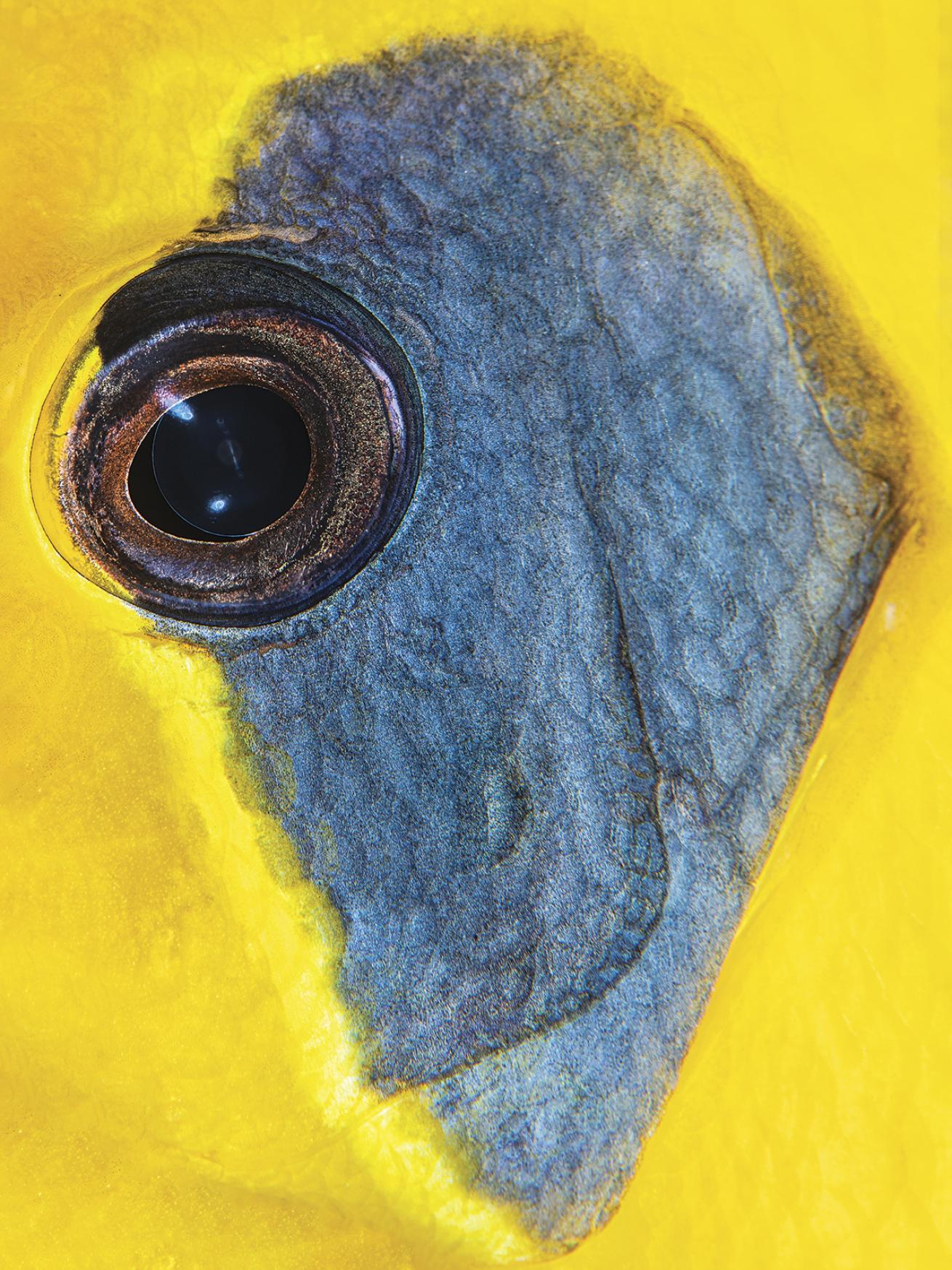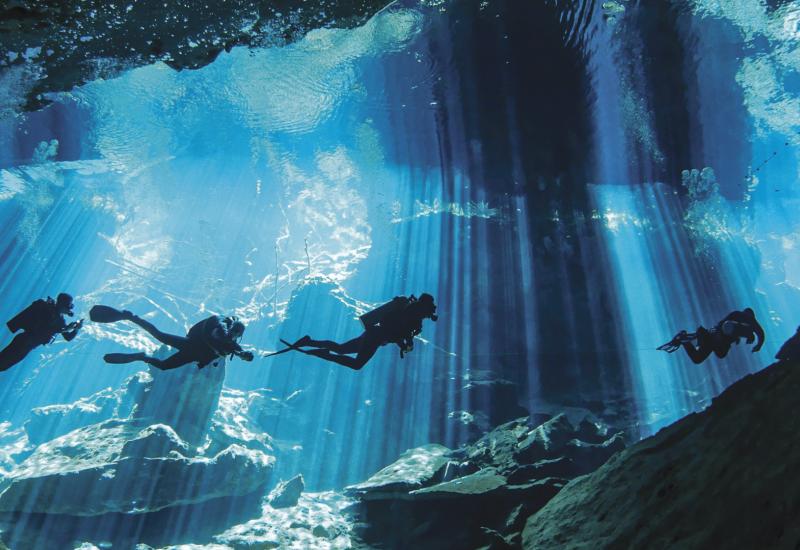How to Place in Underwater Photo Contests

Alex MustardAwarded in the Wildlife Photographer of the Year 2019 competition, this combines graphic composition with interesting behavior.
There are few better ways to improve your photography than absorbing inspiration from underwater imagery like the winners in this issue. While contests can occasionally bring out the worst in photographers, most of the time they have a positive impact. Competitions celebrate and encourage excellence, allow us to gauge our progress, and provide an independent assessment of greater value than social media likes. Successes massage our ego, and can lead to life-changing opportunities.
Tip 1: What to Shoot
The most popular subjects for underwater photography are living creatures; any decent photo competition wants to promote the right kind of approach with wildlife. Do not take photos that involve stressing or moving animals. Common transgressions that judges disqualify are benthic species floating in the water column or creatures picked up and plonked on unnatural backgrounds. Even if judges let something slip through, you can suffer being named and shamed by your peers when the results are out. The message is simple—go about your photography in the right way.
Competition photos exist to wow people. These are usually photos with immediate impact: strong compositional shapes, clean backgrounds, rich colors and powerful contrast. Most contests demand RAW files for checking the validity of your entries, so make sure you are not wasting your time shooting JPGs.
The standard of underwater photographs has soared in the 15 years since cameras became digital and photographers could finally see what they were doing. This means that contests are flooded with technically perfect, eye-catching compositions. In short, being excellent is no longer enough—you need to stand out too.
Show the judges a subject or technique that they’ve never seen. Seek out new locations, or dive at unusual times of day—get out of your comfort zone. Often standing out is about putting your own twist on what everyone normally does. This can be as simple as shooting a macro subject with a wide-angle lens, or converting a traditionally colorful subject into a black-and-white image.
If the judges are photographers, they will always be impressed by challenging species or pictures that reveal natural behavior. The same is true of tricky or difficult techniques like split-levels, long exposures, off-camera strobes or snoots, although technique must always be justified by the subject.
Finally, avoid copying. Always look at the winners from past contests for an idea of the types of shots that do well. Be inspired by previous winners, but don’t set out to replicate them exactly or your photo will end up in the “seen it before” pile.
Tip 2: What to Enter
Competitions are a sport, and top performers know the rules. Different judges have different tastes, so a single contest is rarely the route to success—names you regularly see doing well make sure their best images are entered regularly.
Perhaps the biggest differentiator between photographers is not how well they shoot, but what they choose to enter. With digital cameras, we can take so many frames it makes choosing harder than ever. The most common mistake is to enter images we are emotionally attached to. Shots of subjects we long lusted after or that came from an amazing dive are likely to be our favorites, but judges won’t know or care. Winning shots must stand alone, without a backstory.
Another common mistake is not reading the rules. Some contests don’t want images that have placed previously or were taken before a specific date. Most contests don’t want images that have your name on them (to maintain the anonymity of judging). Make sure your images are correctly sized and entered in the correct category—every contest I have judged has had images from photographers who definitely knew better excluded for these reasons.

Alex MustardSimple, eye-catching, colorful compositions, such as this butterfly- fish eye, will attract the judges.
Don’t enter shots that are not sharply in focus, correctly exposed, attractively lit and interestingly composed. Process your images to the best of your ability—it’s always better to enter fewer well-processed images than lots of sloppy ones. Process to the highest standard allowed by the rules, but don’t overdo it (most judges prefer a natural look) and definitely don’t overstep the limits of the rules as this is the biggest reason for disqualifications. Also, don’t spam judges with loads of similar shots; judges will conclude that type of shot is just too common.
Finally, remember that you have to be in it to win it. Don’t miss deadlines—most contests are open for months, and there is never a penalty for entering early. When the results do come out, remember that they are subjective. If you don’t place, it doesn’t mean you are a bad photographer; if you win, it probably doesn’t mean you are the greatest! Instead, take either result as motivation to strive for even better images in the future.










